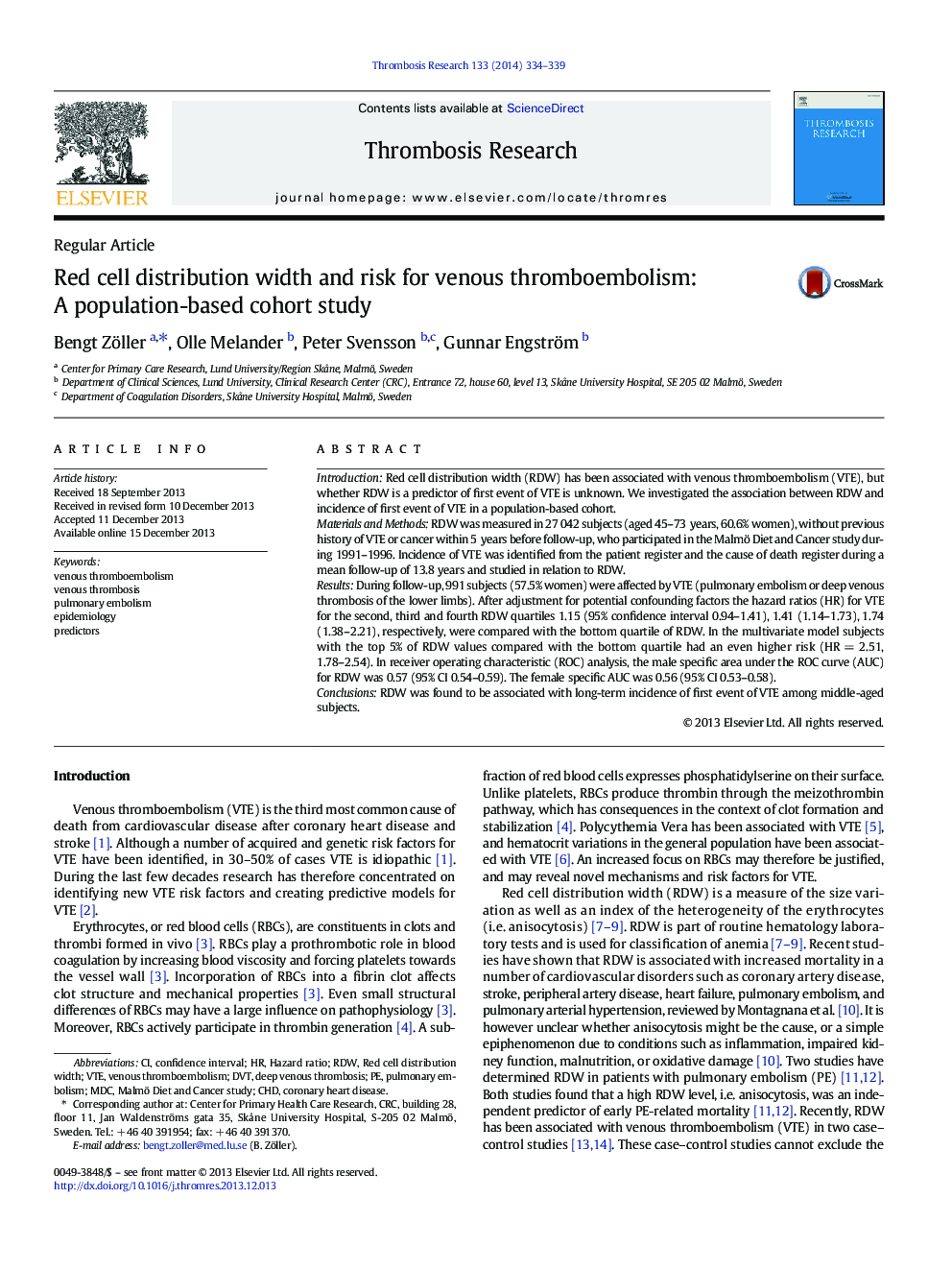| Article ID | Journal | Published Year | Pages | File Type |
|---|---|---|---|---|
| 6002403 | Thrombosis Research | 2014 | 6 Pages |
IntroductionRed cell distribution width (RDW) has been associated with venous thromboembolism (VTE), but whether RDW is a predictor of first event of VTE is unknown. We investigated the association between RDW and incidence of first event of VTE in a population-based cohort.Materials and MethodsRDW was measured in 27 042 subjects (aged 45-73Â years, 60.6% women), without previous history of VTE or cancer within 5Â years before follow-up, who participated in the Malmö Diet and Cancer study during 1991-1996. Incidence of VTE was identified from the patient register and the cause of death register during a mean follow-up of 13.8Â years and studied in relation to RDW.ResultsDuring follow-up, 991 subjects (57.5% women) were affected by VTE (pulmonary embolism or deep venous thrombosis of the lower limbs). After adjustment for potential confounding factors the hazard ratios (HR) for VTE for the second, third and fourth RDW quartiles 1.15 (95% confidence interval 0.94-1.41), 1.41 (1.14-1.73), 1.74 (1.38-2.21), respectively, were compared with the bottom quartile of RDW. In the multivariate model subjects with the top 5% of RDW values compared with the bottom quartile had an even higher risk (HRÂ =Â 2.51, 1.78-2.54). In receiver operating characteristic (ROC) analysis, the male specific area under the ROC curve (AUC) for RDW was 0.57 (95% CI 0.54-0.59). The female specific AUC was 0.56 (95% CI 0.53-0.58).ConclusionsRDW was found to be associated with long-term incidence of first event of VTE among middle-aged subjects.
